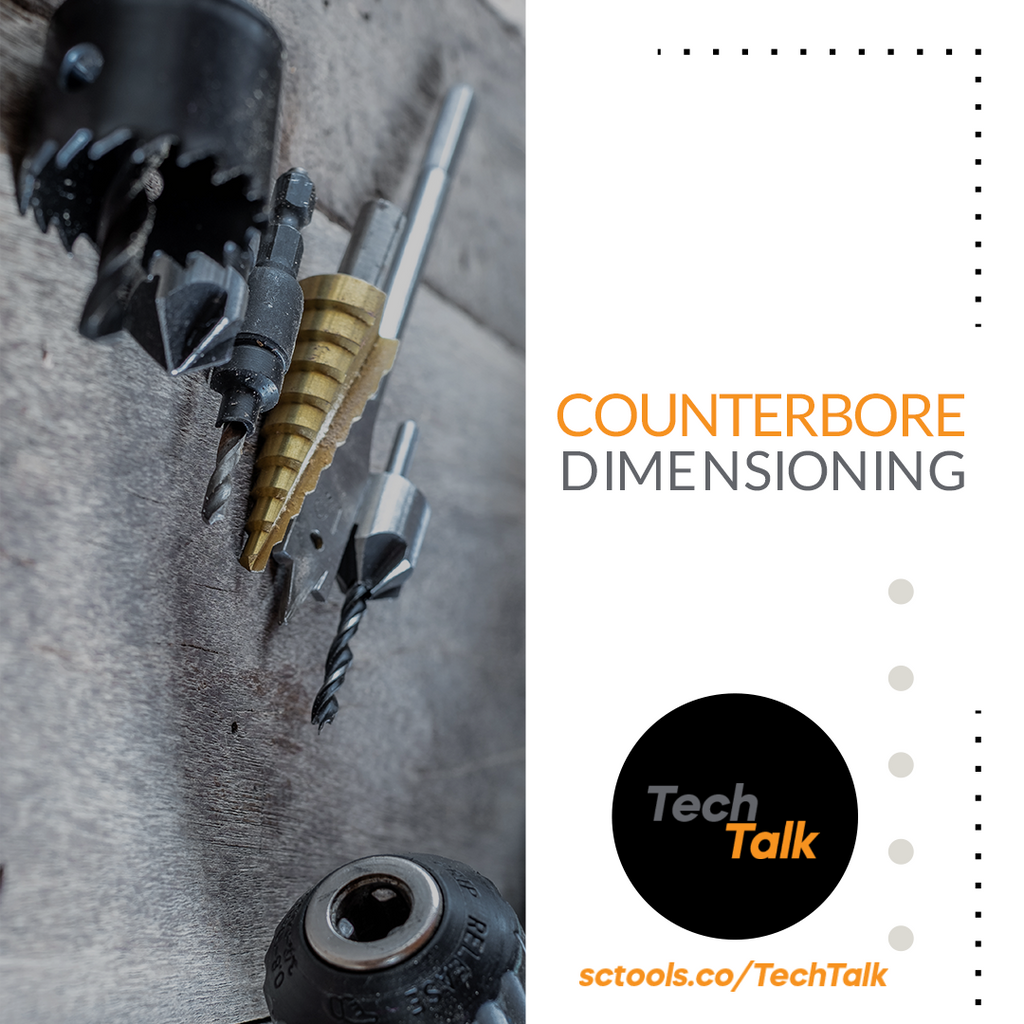A counterbore is a tool used to create a flat-bottomed hole with a larger diameter than the main body of the hole. It is typically used to create a surface for a bolt or screw head to sit flush with or to allow the head of the fastener below the material's surface.
A counterbore tool consists of a cylindrical cutting tool with a flat end mounted on a machine such as a lathe or milling machine. The tool removes material from the hole's surface, creating a flat-bottomed hole with a larger diameter.
Counterbores are commonly used in manufacturing, engineering, and other industries where precise and consistent holes are required. Sizes and styles depending on the application and the material being worked on.
What Is Counterbore Dimensioning
Counterbore dimensioning refers to specifying the size and tolerances of a counterbore hole. This typically involves specifying the diameter and depth of the counterbore, as well as the diameter and depth of the main body of the hole.
Counterbore dimensioning can be done using standard measurement tools such as calipers and micrometers or specialized measurement instruments like a toolmaker's microscope or a coordinate measuring machine (CMM).
It is also important to consider the tolerances and manufacturing processes used to produce the counterbore to ensure that the hole meets the required specifications.
Benefits of Using Counterbore Dimensioning
Improved Fastener Performance
By creating a flat surface for the screw or bolt head to sit on, counterbore dimensioning can help improve the fastener's performance. This is especially important in applications where the fastener is subjected to high loads or stress.
Enhanced Aesthetics
Counterbore dimensioning can help create a more visually appealing finished product, as the fastener head will flush with the workpiece's surface.
Increased stability
By creating a larger, more secure connection between the workpiece and the fastener, counterbore dimensioning helps increase the stability of the assembled components.
Reduced Manufacturing Time
Counterbore dimensioning streamlines the manufacturing process by reducing the number of separate operations required to fasten the workpiece to another component. This helps to reduce production time and cost.
Improved Tolerance Control
Using a specialized cutting tool in the counterbore dimensioning process improves tolerance control, ensuring that the finished hole is of the desired size and shape.
Factors for Choosing the Correct Counterbore Dimensions
Size and Type of Fastener
The size and type of fastener used with the counterbore will determine the size of the counterbore hole. The head of the fastener should sit flush with or below the surface of the workpiece, and the fastener should have sufficient thread engagement to ensure a secure connection.
Material and Thickness of the Workpiece
The material and thickness of the workpiece will also affect the dimensions of the counterbore. Thicker materials may require larger counterbores to ensure that the fastener has sufficient thread engagement.
Tolerances
It is important to consider the tolerances for the counterbore dimensions and the manufacturing processes that will be used to produce the counterbore. This will help ensure that the hole meets the required specifications.
Industry Standards
Industry standards or guidelines may specify the dimensions for counterbores in certain applications. It is important to apply these standards when determining the dimensions for a counterbore.
Overall, it is important to consider all these factors carefully to determine the right dimensions for a counterbore. It may be helpful to consult with SCTools, a tooling specialist with experience in producing counterbores, to ensure that the dimensions are appropriate for your specific application.
Our simple, handy chart makes counterbore dimensioning quick and uncomplicated. The dimensions for various types and sizes of fasteners are listed in a table showing the counterbore's metric or imperial dimensions. It includes information such as the diameter and depth of the counterbore hole and the diameter and depth of the main body of the hole.
| If you have any questions about carbide cutting tools, end mills, drills, etc. be sure to reach out to us @ sctools.co/Home or call us at (877)737-0987. We help you machine better! |



Comments (0)